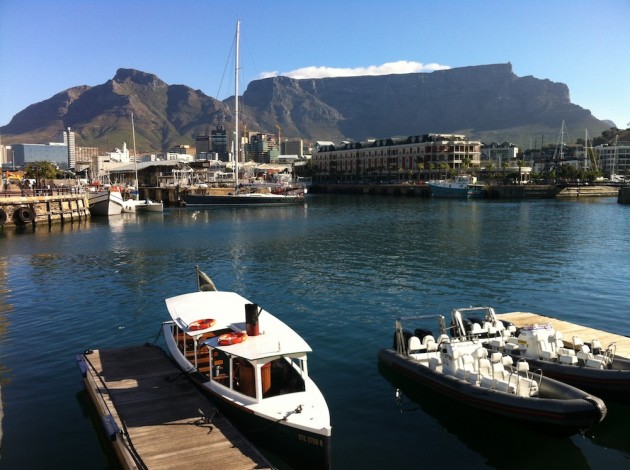Round the world sailors have covered 20,000 miles and at times the strains are showing
Since January last year the sailors in the World ARC fleet have sailed around 20,000 miles. But today they left Cape Town, turning the last corner of their circumnavigation to make their way back to the finish in Saint Lucia.
A fleet of 18 yachts of the 22 in the World ARC circumnavigation set off in light winds on their leg to Salvador in Brazil (the remaining four boats are waiting for work to be complete before following). On the way will make a pitstop at the remote island of St Helena, some 1,700 miles away.

The rally route is dictated by the different seasons along the way, but it makes the pace fairly brisk. At this point in the circumnavigation, gear, boats and people can feel a little tired and crews have spent almost two months in South Africa cruising and getting maintenance done.
It has also allowed some time for reflection, and what I’m hearing from the rally sailors – as in all the world rallies I’ve covered before – is about the hard work from all involved that keeps it moving. Make no mistake, the round the world cruising dream is no easy ride. That can come as a surprise to anyone expecting the much talked of ‘milk run’.
This is not necessarily a complaint from sailors, by the way. Dealing with the unexpected is “part of the adventure” according to one skipper. But it is a fact about cruising this way, where so many miles are covered in a short period.
There have been some close-run things: the sinking of one yacht in the Indian Ocean after a collision with an unidentified object damaged the rudder tube; and a catamaran that was holed on a reef in the Pacific and came very close to going down – more on that in a forthcoming magazine feature.
Crews I’ve been speaking to here say that the costs of maintenance and life afloat have been perhaps double what they estimated. For skippers, life in port revolves around getting work done. Even if you employ someone to the work, you can’t just hand it over.
There’s a lot of waiting for engineers to arrive, and when they do it’s a wise boat ower who oversees the repairs.
The pace of the rally also sees many crew changes and few full crews keep the same contingent as they started with or originally planned. Life together in a confined space can get tense.
It takes its toll on couples, too. In short, they’ve elected for a way of life where the husband (for ’tis usually he) is the undisputed boss. At sea that’s in effect 24/7 and can extend to minutiae such as where you leave your cup, how you tidy your cabin or how loudly you shut locker doors.
“I knew I’d married Mr Right,” one woman remarked. “I just didn’t realise his first name was Always.”
“It is difficult. We’ve nearly called it quits a couple of times,” another couple told me. “Don’t believe anyone who tells you they haven’t had problems.”
A Swiss skipper confesses he’s had difficulties finding crew at some stages and tells me what I think are a couple of very worrying tales about people he’s had on board. But he, too, says philosophically: “It’s the salt in the soup. If everything worked exactly as you expected where would the adventure be?”
I won’t spoil some of the incredible stories I’ve picked up. Suffice it to say they are page-turning, that if you want to know what it’s really like sailing around the world, the real nature of the day-to-day challenges that make a circumnavigation such a serious achievement, keep your eye out for our forthcoming March issue.




